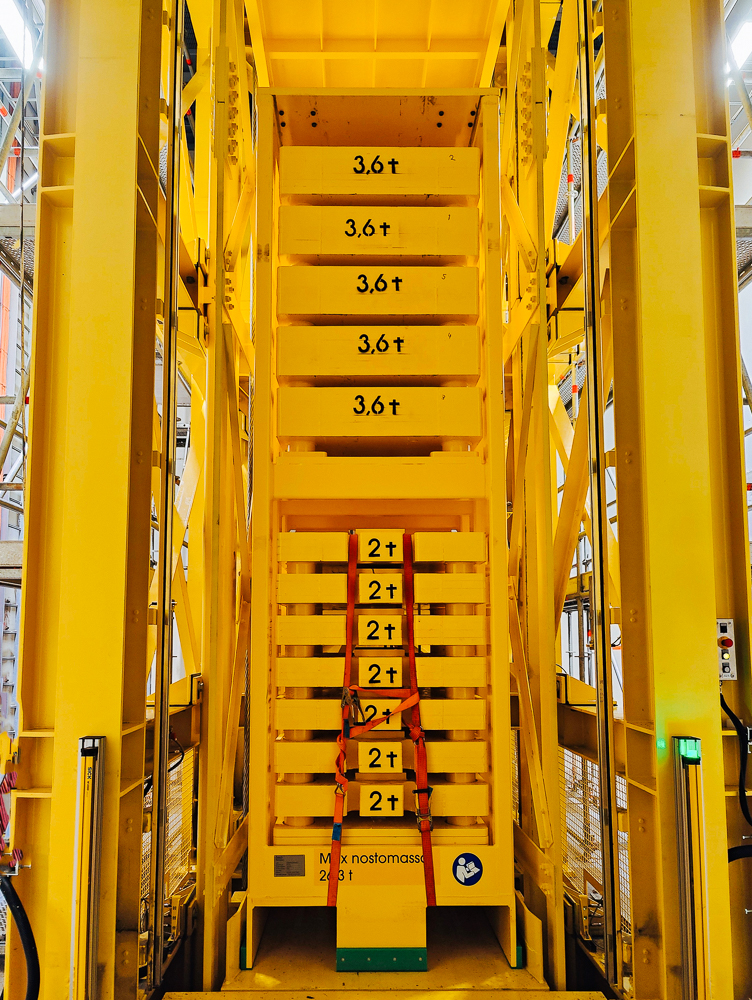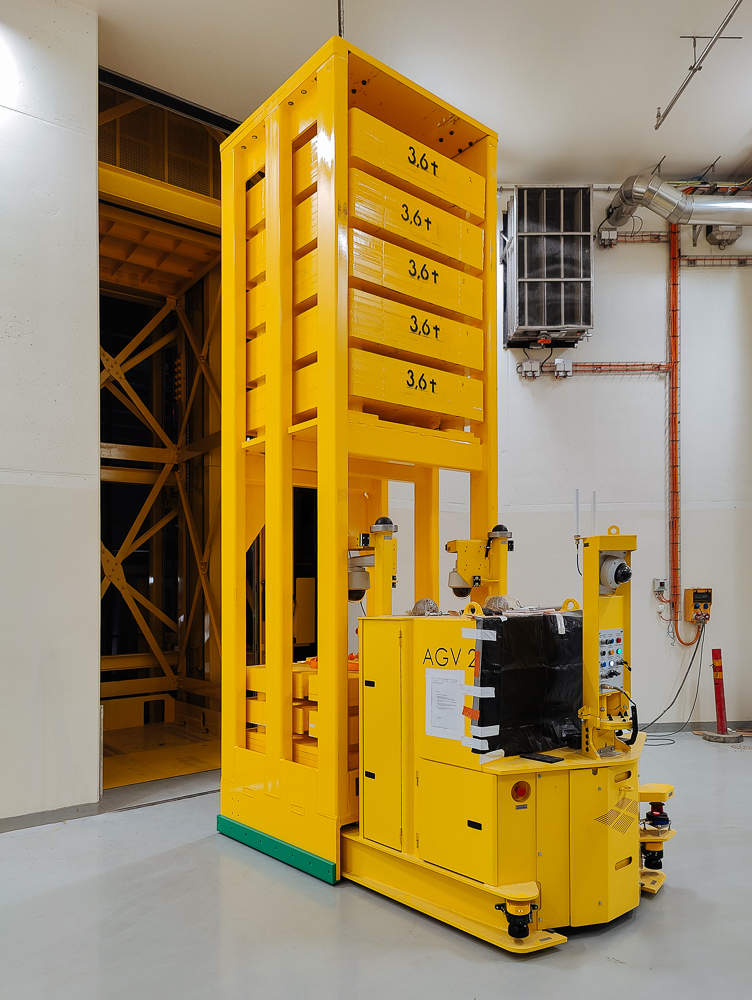Canister lift load test completed successfully
The load test is part of the commissioning of the canister lift currently carried out by Posiva in good cooperation with the Radiation and Nuclear Safety Authority of Finland (STUK). The canister lift is one of the most critical and carefully overseen processes in Posiva’s final disposal of spent nuclear fuel.
Text: Pasi Tuohimaa
The photo shows the canister lift suspended from ropes in the lift shaft with a 40-ton and 125% static test load. The canister lift running underground from Posiva’s encapsulation plant underwent the load test successfully also with its normal maximum capacity load of 32 tons. In this test, the lift was run down to the canister receiving station at a depth of 450 metres, and then back up.
- Now the lift is well in hand. We tested it with several different loads because the final disposal canisters will also have different weights. The maximum capacity of the lift is 32 tons but we tested the brakes of the lift also in a 110% dynamic test over a slightly shorter distance. And in addition, we conducted the 40-ton 125% static test shown in the photo, tells Tommi Ristimäki from Posiva who is in charge of the tests.

- Both tests were successful. In the static test, the lift was lifted slightly up on the top landing and held there with the brakes of the lift’s drive unit for one hour.
The performance of the four lift ropes as well as the numerous safety functions of the lift were monitored in the test. The position of the lift’s counterweights is monitored by means of encoders which record the movement of the lift ropes and convert this into bits.
- Loads of this size also cause the lift ropes to stretch. We monitor this stretching with synchronisation switches every time the lift approaches a station. This is used to specify the exact position of the lift. When stretching occurs, the ropes are then tensioned, Ristimäki explains.

50-minute journey underground
Posiva’s canister lift travels at a speed of 0.4 metres per second. With all the different phases of the transfer sequence included, the whole journey from the encapsulation plant on the ground to the canister storage underground takes about 50 minutes. In other words, the ride is much more leisurely than with Posiva’s passenger lift which has a speed of eight metres per second and a total travel time of one minute and six seconds.
The testing of the canister lift will continue until the end of April. On Monday, 22 April, the lift started to undergo the Production Trial Run where it runs five times down and up carrying various loads corresponding to fuel from OL1 and OL2 and also an empty rack.
See Posiva Oy animation of The Final Disposal of Spent Nuclear FuelOpen link in a new tab
Share